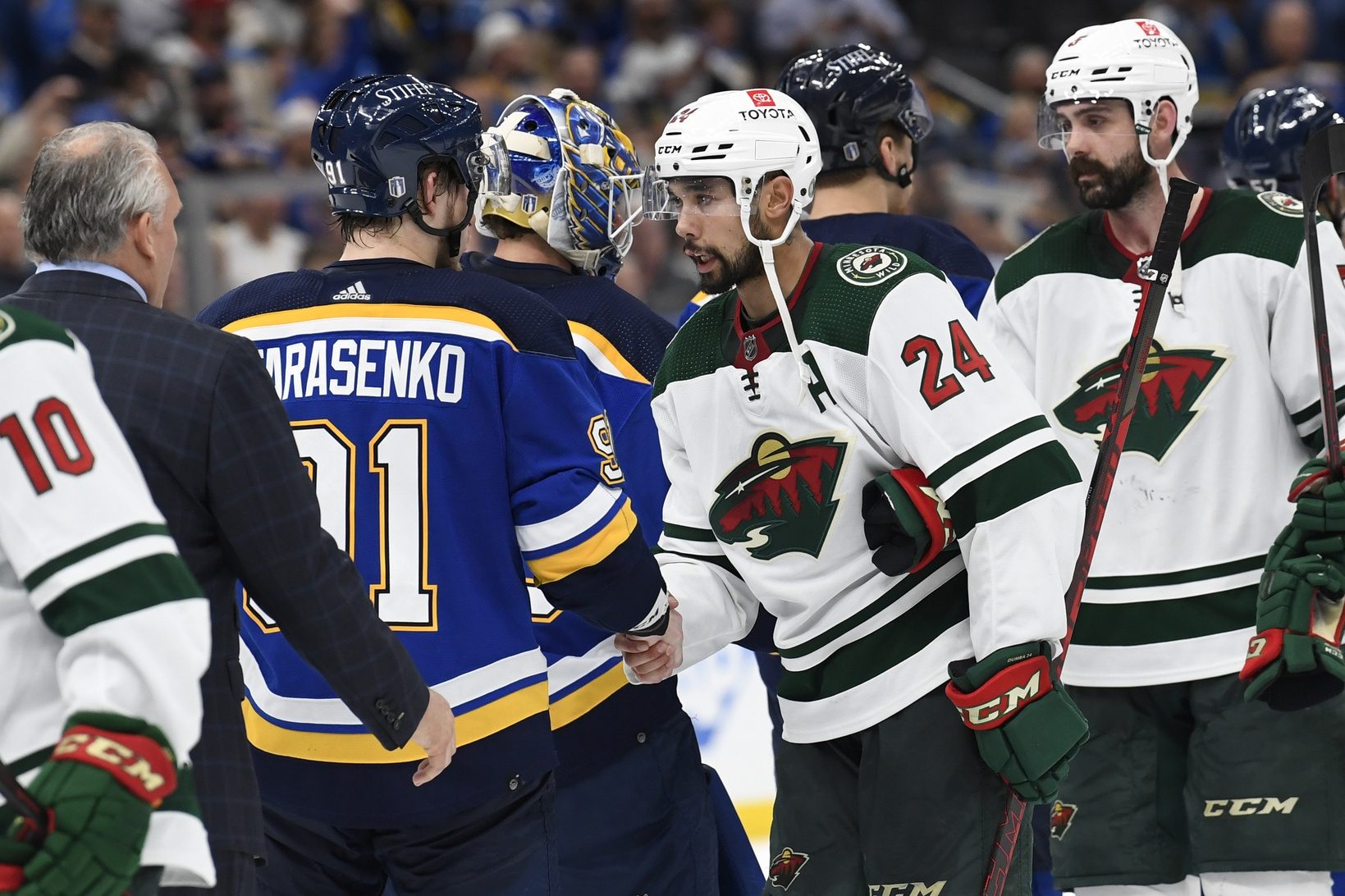
This summer, the Minnesota Wild are faced with many crucial questions as they figure out how to field a competitive roster under a tight salary cap. But there's a question that plagues the Wild, and it's often lost in the conversations around this team.
When is the Wild's Stanley Cup window?
Owner Craig Leipold said it's right now as he defended the Zach Parise and Ryan Suter buyouts — the two faces of the franchise that led the Wild to six straight postseason appearances and eight in nine years.
"The best part is the next five years, maybe six, our window is open," Leipold said. "And we're gonna get better...because we've got really good young players, and we really feel like they're going to be a big part of our future."
Eight months later, the Wild are again coming to grips with the reality of their historic season concluding early and adding another first-round exit to their mediocre resume. This time, it was at the hands of the St. Louis Blues in just six games. It was a disappointing ending because the Wild played like they were contenders at different points during the season. But it's clear Minnesota is still a few pieces away from being a bonafide Cup contender.
Worse yet, Minnesota will likely lose several pieces this summer because of the cap crunch. Budding star Kevin Fiala is inevitably going to be among the potential departures. If the Wild want to replicate this success next season, they'll need their top prospects to produce and fill in seamlessly. But even that might not be enough to make any significant run.
Was Leipold right when he proclaimed the Wild's window is open for the next five or six years?
Well, it's already clear how detrimental the buyouts are to the organization. The Wild enter the summer with $15 million less than everyone else in the league. It's difficult to envision the Wild being in the Stanley Cup conversation over the next three years. Heck, fielding a competitive team will be a challenge on its own.
But there's still a strong case for Minnesota returning to the postseason next year and the following two years. On the one hand, the Wild's top line is still intact and one of the best offensive lines in the league. Then there's Marco Rossi and Calen Addison, who could immediately help this team next season. And the Wild have a ton of depth, including their identity line of Jordan Greenway, Joel Eriksson Ek, and Marcus Foligno. More, the Wild's defensive core is still among the best in the league.
On the other hand, Minnesota's offense is suspect going into next season. The loss of Fiala coupled with several breakout seasons means that the Wild may not be able to replicate the best offensive season in franchise history. And the cap crunch has led to Minnesota making some less ideal moves, such as signing veterans Alex Goligoski and Jon Merrill to multi-year deals.
Or perhaps the Wild decide to target an NHL-ready piece in return for Fiala. A forward, such as a Martin Necas, would immediately impact and recoup some of the production lost in a Fiala departure.
While a deep run might not be in the cards in the near future, the 2025-26 campaign is primed to be a turning point for the organization. They'll be free from the dead cap from the buyouts. The Wild only have four players signed for that season: Kirill Kaprizov, Eriksson Ek, Jared Spurgeon, and Jonas Brodin. That provides the Wild with the most flexibility they've had in a long time, and it's a massive opportunity to reach a new standard for hockey in Minnesota.
Along with Kaprizov, who will be in the final year of his contract, and Eriksson Ek, Rossi, and Matt Boldy will be in the prime of their careers. Add Adam Beckman and Marat Khusnutdinov to the mix, and all of a sudden, the Wild will have a steady supply of young talent up front.
By then, Jesper Wallstedt should be Minnesota's starter, and he could be a future Andrei Vasilevskiy-type talent. A group of defensive prospects, including Carson Lambos, Ryan O'Rourke, and Daemon Hunt, could be playing in front of him. Addison could as well if he's still in the organization.
That's not even considering what the Wild get in return for Fiala and other prospects that end up making the lineup at that point. And then there's Spurgeon and Brodin, who could potentially influence the Wild's ability to contend at that point. Spurgeon will turn 36 during the 2025-26 campaign, and Brodin will be in his age-32 season.
That's not ideal, considering the possibility of age-related regression and their lucrative contracts. But upper-echelon players are often able to maintain production into their mid-30s. So, there should be a sense of optimism that they can maintain form, to a degree, through the remainder of their contracts. It will be important that they do because it might be the ideal time for the Wild to do some damage in the postseason.
Sure, there are reasons to believe that Bill Guerin can navigate the pending cap crunch. While making a run shouldn't be ruled out, it's not likely, given the cap outlook that has already caused changes to occur. Not all is lost, though, because the incoming prospects give Minnesota the ability to create the next core group. With added flexibility in three years, that makes it more realistic that the Wild's window opens when the buyout penalties expire.
Think you could write a story like this? Hockey Wilderness wants you to develop your voice, find an audience, and we'll pay you to do it. Just fill out this form.







Recommended Comments
There are no comments to display.
Join the conversation
You can post now and register later. If you have an account, sign in now to post with your account.
Note: Your post will require moderator approval before it will be visible.